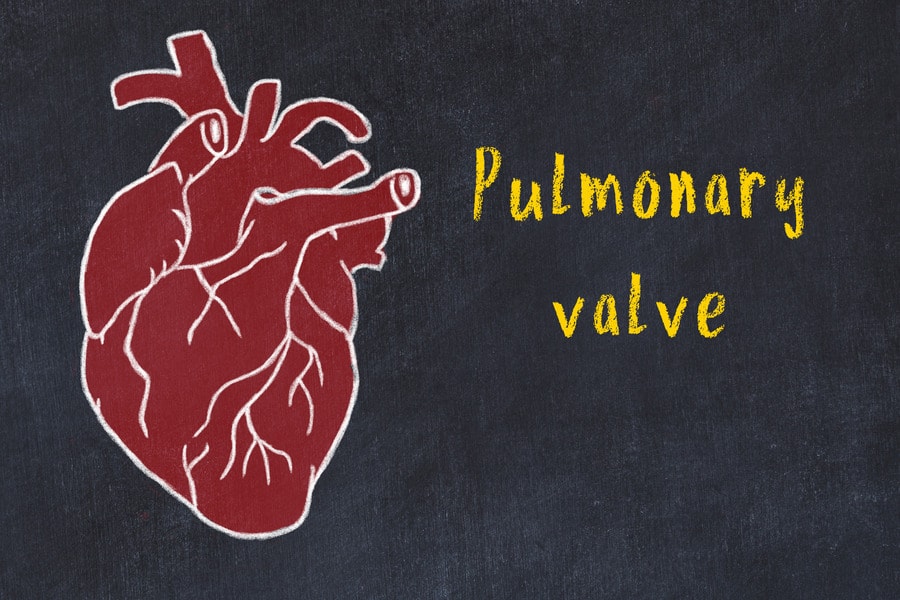Pulmonary valve disease is a condition that affects the pulmonary valve, one of the four valves in the heart. The pulmonary valve is responsible for regulating blood flow between the right ventricle and the pulmonary artery, which carries oxygen-poor blood to the lungs for oxygenation. Pulmonary valve disease occurs when the valve doesn’t function properly, leading to inefficient blood flow.
Overview:
Pulmonary valve disease can manifest in two main forms:
- Pulmonary Valve Stenosis: This occurs when the pulmonary valve becomes thickened or fused together, preventing it from opening properly. As a result, blood flow from the heart to the lungs is restricted, forcing the heart to work harder.
- Pulmonary Valve Regurgitation: This occurs when the pulmonary valve doesn’t close properly, allowing blood to flow back into the right ventricle. This leads to a decrease in blood flow to the lungs and increased pressure within the heart.
Both conditions can strain the heart, leading to an enlargement of the right ventricle and eventually heart failure if left untreated.
Symptoms:
Symptoms of pulmonary valve disease can vary depending on its severity. Mild cases may show no symptoms, while more severe cases can cause:
- Shortness of breath, especially during physical activity
- Fatigue or weakness
- Chest pain
- Heart palpitations or irregular heartbeat
- Swelling in the ankles, legs, or abdomen
Causes:
Pulmonary valve disease can have various causes:
- Congenital: The disease is often present at birth, resulting from abnormal development of the pulmonary valve during pregnancy.
- Rheumatic Fever: This inflammatory disease, which can develop after untreated strep throat or scarlet fever, can damage the pulmonary valve.
- Endocarditis: An infection of the inner lining of the heart, including the valves, can lead to pulmonary valve disease.
- Aging: As people age, the risk of valve disease increases, as the valves may become thicker and less flexible.
Risk Factors:
The main risk factors for pulmonary valve disease include:
- Congenital Heart Defects: As mentioned, pulmonary valve disease can be present at birth as a result of abnormal development during pregnancy. If there’s a family history of heart defects or if the mother had certain infections or took certain medications during pregnancy, the risk may be higher.
- Rheumatic Fever: Rheumatic fever is a complication of untreated strep throat or scarlet fever. It can cause inflammation and damage to the heart, including the valves. People who’ve had rheumatic fever are at a higher risk of developing pulmonary valve disease.
- Endocarditis: This infection of the inner lining of the heart can be caused by bacteria entering the bloodstream through activities like dental procedures or through intravenous drug use. People with a history of endocarditis are more prone to pulmonary valve disease.
- Aging: As people age, the risk of pulmonary valve disease increases. The heart valves may become thicker, stiffer, and less flexible over time, leading to valvular heart disease.
- Other Heart Conditions: People with other heart conditions, such as arrhythmias or previous heart surgeries, may be at a higher risk of developing pulmonary valve disease.
Avoidance and Management:
To avoid pulmonary valve disease, follow these tips:
- Prevent Rheumatic Fever: Treat strep throat promptly with antibiotics.
- Protect Against Endocarditis: If you have a history of heart valve disease, take antibiotics before dental or surgical procedures.
- Maintain Heart Health: Exercise regularly, eat a balanced diet, and manage blood pressure and cholesterol levels.
When to See the Doctor:
If you experience any symptoms of pulmonary valve disease, or if you have a history of heart valve disease, consult a healthcare professional. Early diagnosis and treatment can help prevent complications.
Helpful Information:
Treatment options for pulmonary valve disease may include medications, minimally invasive procedures, or surgery, depending on the severity of the condition and the patient’s overall health. Regular monitoring and follow-up with a cardiologist are crucial to managing pulmonary valve disease effectively.
Diagnosis:
The diagnosis of pulmonary valve disease involves a thorough physical examination, review of symptoms, and use of imaging tests like echocardiography (ultrasound of the heart) or cardiac catheterization. These tests help assess the function and structure of the pulmonary valve.
Treatment Options:
Treatment varies based on the type and severity of pulmonary valve disease:
Medications:
Diuretics, beta-blockers, or calcium channel blockers may be used to manage symptoms like shortness of breath or irregular heartbeats.
Valvuloplasty:
In this minimally invasive procedure, a balloon-tipped catheter is inserted into the valve and inflated to widen the valve opening.
Valve Repair or Replacement Surgery:
In severe cases, the pulmonary valve may need to be repaired or replaced with a mechanical or biological valve.
Prognosis and Management:
With proper treatment and management, many people with pulmonary valve disease lead healthy lives. It’s essential to have regular check-ups with a cardiologist and follow the prescribed treatment plan. Maintaining a heart-healthy lifestyle is crucial, which includes regular exercise, a balanced diet, and avoiding smoking.
Pregnancy Considerations:
Women with pulmonary valve disease should consult their healthcare provider before becoming pregnant, as the condition may increase the risk of complications during pregnancy. Proper prenatal care and monitoring are essential.
In summary, pulmonary valve disease is a condition that can be managed with early diagnosis and appropriate treatment. Managing risk factors, leading a heart-healthy lifestyle, and following a treatment plan are crucial steps in managing this condition.









